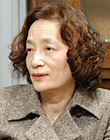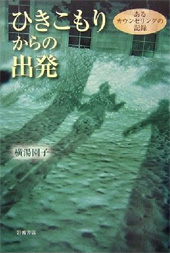Top>Opinion>Hoping to Resolve Bullying, Violence and Other Issues at School
 Index
Index

Sonoko Yokoyu [Profile]
Hoping to Resolve Bullying, Violence and Other Issues at School
Sonoko Yokoyu
Professor of Clinical Psychology, Faculty of Letters, Chuo University
The Chuo University Peer Counselor training Program and the Counseling Mind Scale completed
The clinical educational psychology group in the psychology major finally completed the Peer Counselor training Program, or the Chuo University PCP, and the Peer Counseling Mind Scale for checking it, or the Chuo University PCM Scale, with the assistance of Chuo University Suginami High School.
Situations of children demand peer counseling
Here I will describe how children in Japan require peer counseling. The peer in peer counseling means colleagues. The idea of peer counseling is that people of similar ages with the same backgrounds consult with, give help to, and listen to each other on an equal footing.

Bullying, violence, suicide, and other issues are rapidly increasing mainly in school these days, symbolizing a crisis for children. While young people who visit clinics with various symptoms commonly complain of trepidation such as fear and distrust of humans, children who are living a normal life share such feelings as well.
Some perpetrators also come seeking counseling, and in some cases it turns out that they themselves had been victimized or abused in their childhood. I realize now that we could not deal with children without understanding the pleasure they derive from aggression or lust for dominance. It is surprisingly little known how painful trauma is to people who suffer it, how deeply it hurts their dignity, and how trauma tortures them for the rest of their lives. Not all victims, of course, have their pain develop into symptoms or behavior, or continue to suffer from PTSD for their entire lives. The majority, in fact, try to forget their pain by putting in the past or concealing it as a distant memory.
Nevertheless, they may experience flashbacks of traumatic events. Meeting again in high school after a long time apart might trigger flashbacks of the experience of bullying that occurred in kindergarten or elementary school, renewing the relationship of victim and perpetrator to resume the bullying. Their positions may also be reversed. Many young people whose noticeable symptoms only fall within the range of neurosis are also victims of bullying and other outrages. In addition, some teachers voice as well as show their concern.
Calls and cries for help are veritable windows into society, and the view of the near future that they offer has been far from bright. Indeed, they have revealed warnings to society.
The World Summit for Children calling for the involvement of children
In 1990-the year following the adoption of the Convention on the Rights of the Child at the United Nations General Assembly-leaders worldwide got together at the World Summit for Children and adopted the World Declaration on the Survival, Protection and Development of Children. They also called for the involvement of children in efforts for solving these issues.
While deeply moved, I also thought about the possibility of building or revitalizing the relationship of trust and recovery. I initially conceived of the form through my experience as a school counselor in California.
In those days, however, counselors had not been assigned to schools in Japan, and peer helping or peer counseling programs like those in Britain and the United States, of course, had not been implemented either. Simply mimicking these programs does not work, because they would not treat children under the Japan-specific educational systems with their social and cultural backgrounds unique to the country. The issues and difficulties that children face in Japan are also different from those in the West. I found that we were still at the experimenting and testing stage of Japanese-style programs.
Why peer counseling?
School counselors began to be assigned to schools in 1995. Their roles comprise counseling, coordination and consultation. School counselors work two days a week, four hours a day-eight hours in total-and thirty five weeks a year. Given the numerous issues that are emerging nowadays, they are too busy managing those three tasks to spend time doing peer counseling in which children participate. This is the reason why I argue that they should be employed full-time or be assigned at least more than two days.
In developing the program, we considered the many layers of barriers, untreated traumas, inner struggles, the complexity of family issues, and the danger in confronting these problems.
At the same time, we also had faith in the power of development, natural healing, and the mystic capability residing in the depths of the mind intrinsic to the developmental stage from puberty to young adulthood.
In this way, we developed the program step by step centering on the core principles of I understand and I am listening. Though role plays are essential to mini-lectures and basic training, relying on them too heavily would make the program less interesting, so we incorporated art therapy, story-making, image training and the like as well. Subjects in the trial sessions of the program gradually began cultivating attitudes of listening and talking to others. We were deeply impressed by their enhanced self-esteem, which was heightened as they recognized that the difference between themselves and others was part of their individuality, rather than something to fear.
We also developed the Chuo University PCM Scale in order to identify the ways the program has been effective.
Peer counseling will certainly be implemented one day in the near future. We have named this training program after Chuo University in the hope that it will be widely utilized going forward, and in the hope of independence for future generations.
- Sonoko Yokoyu
Professor of Clinical Psychology, Faculty of Letters, Chuo University - Professor Yokoyu was born in Shizuoka Prefecture in 1939. She graduated from the Faculty of Social Welfare, Japan Collage of Social Work.
Before taking up her current position as a Professor on the Faculty of Letters at Chuo University, she worked as a teacher for children patients at the child psychiatry ward of the Kohnodai Hospital, the International Medical Center of Japan; as a teachers' consultant for the Ichikawa City Education Center in Chiba Prefecture; as an Associate Professor at Joshibi University of Art and Design; and as a Professor at Hokkaido University. She is also a clinical psychotherapist.
Professor Yokoyu's area of specialization is clinical educational psychology. She is conducting comprehensive studies for addressing the increasing difficulties surrounding young people, while attempting to bridge pedagogy, clinical psychology and child and adolescent psychiatry, as well as making efforts to develop specialists in clinical educational psychology.
Her publications include The Spell of the Abeles Ring [Abe-ru Yubiwa no Omajinai] (Iwanami Shoten); Mysteries in the Mind of a Child [Kodomo no Kokoro no Fushigi] (Kashiwashobo); Departure from Juvenile Withdrawal [Hikikomori karano Shuppatsu] (Iwanami Shoten); and Clinical Educational Psychology [Kyouiku Rinshou Shinrigaku] (University of Tokyo Press).
- Research Activities as a Member of Research Fellowship for Young Scientists (DC1), Japan Society for the Promotion of Science (JSPS) Shuma Tsurumi
- Important Factors for Innovation in Payment Services Nobuhiko Sugiura
- Beyond the Concepts of Fellow Citizens and Foreigners— To Achieve SDGs Goal 10 “Reduce Inequality Within and Among Countries” Rika Lee
- Diary of Struggles in Cambodia Fumie Fukuoka
- How Can We Measure Learning Ability?
—Analysis of a Competency Self-Assessment Questionnaire— Yu Saito / Yoko Neha - The Making of the Movie Kirakira Megane








